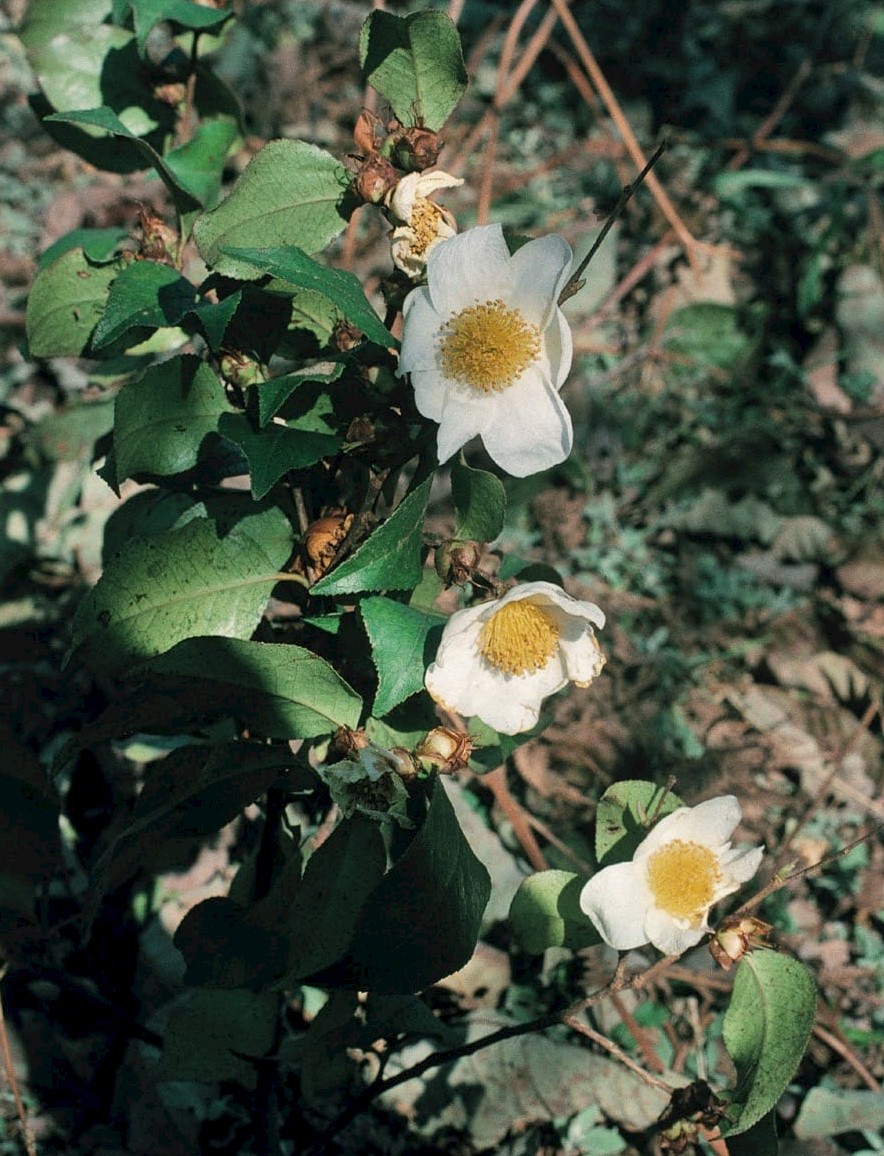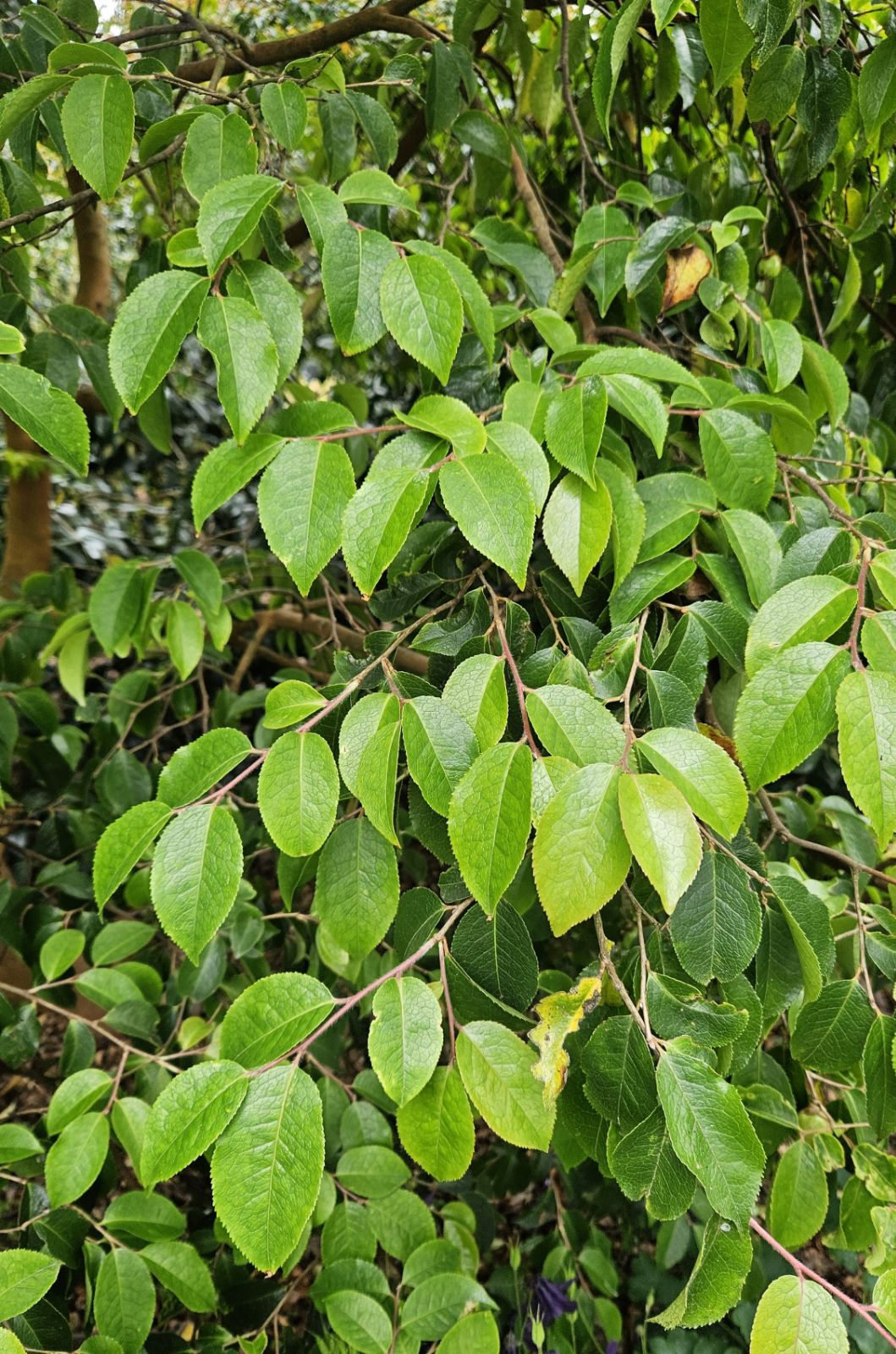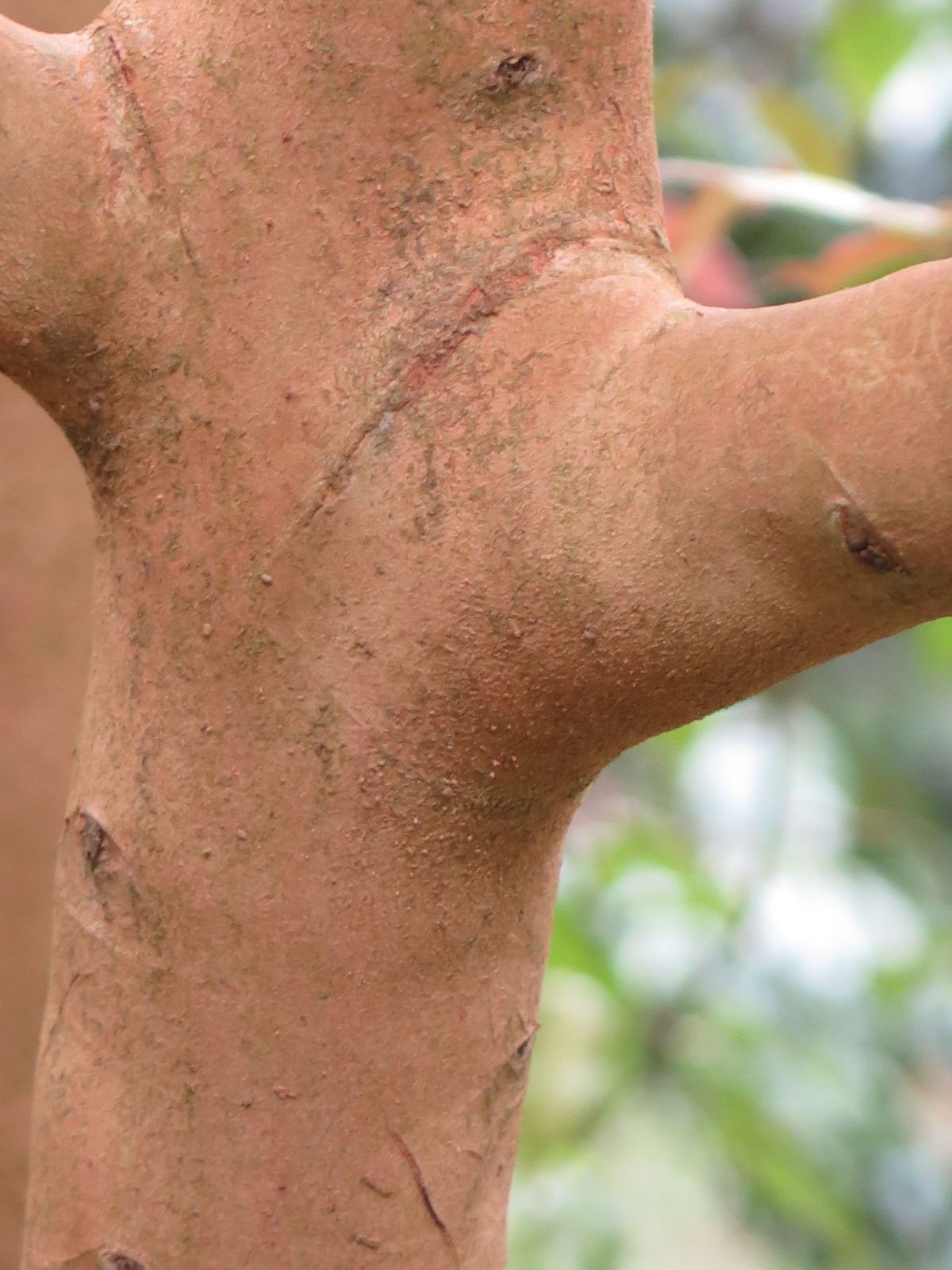Camellia yunnanensis
Credits
Article from New Trees by John Grimshaw & Ross Bayton
Recommended citation
'Camellia yunnanensis' from the website Trees and Shrubs Online (treesandshrubsonline.
Genus
Synonyms
- C. acutiserrata Hung T. Chang
- C. henryana Cohen-Stuart
- C. scariosisepala Hung T. Chang
Other taxa in genus
- Camellia brevistyla
- Camellia caudata
- Camellia chekiangoleosa
- Camellia chrysantha
- Camellia costei
- Camellia crapnelliana
- Camellia cuspidata
- Camellia drupifera
- Camellia edithae
- Camellia forrestii
- Camellia furfuracea
- Camellia granthamiana
- Camellia japonica
- Camellia kissii
- Camellia lutchuensis
- Camellia maliflora
- Camellia oleifera
- Camellia ptilophylla
- Camellia reticulata
- Camellia saluenensis
- Camellia sasanqua
- Camellia sinensis
- Camellia taliensis
- Camellia tsaii
- Camellia × vernalis
- Camellia × williamsii
Shrub or tree 1–5(–7.5) m. Branchlets pale brown to purplish brown, pubescent. Leaves thinly leathery, 4–6.5(–11.5) × 2–3.5(–4) cm, ovate to elliptic, upper surface dark green and hairy along the midrib, lower surface pale green and sparsely villous, five to nine secondary veins on each side of the midrib, margins minutely serrate, apex acute, acuminate or caudate; petiole 0.2–0.5 cm long, pubescent. Flowers axillary or subterminal, solitary, 3–5 cm diameter, subsessile. Bracteoles/sepals 9–11, persistent, greenish brown, largely glabrous; petals 7–12, white, broadly obovate to elliptic, 2–4(–5) cm long, apex rounded; stamens numerous, 1.5–2.5 cm long; ovary glabrous. Capsule subglobose to globose, purplish red to brown, 4–6 cm diameter, splitting via five valves, each segment with two to three seeds. Flowering November to March, fruiting August to October (China). Ming & Bartholomew 2007. Distribution CHINA: southwest Guizhou, southwest Sichuan, Yunnan. Habitat Forests between 1100 and 3200 m asl. USDA Hardiness Zone 8–9. Conservation status Not evaluated. Illustration Chang & Bartholomew 1984; NT196. Cross-reference K267.
Camellia yunnanensis is an interesting plant with much horticultural potential to explore – a ‘top class’ species according to Hudson (2004). Individuals produce their fine white flowers between autumn and spring and, if pollination is successful, follow them with large pomegranate-like fruits hanging below the shoots. The foliage is relatively small and neat, giving the tree a dainty look. It is not common in our area but is cultivated in Cornwall and the Pacific Northwest, so should be considered moderately hardy.



